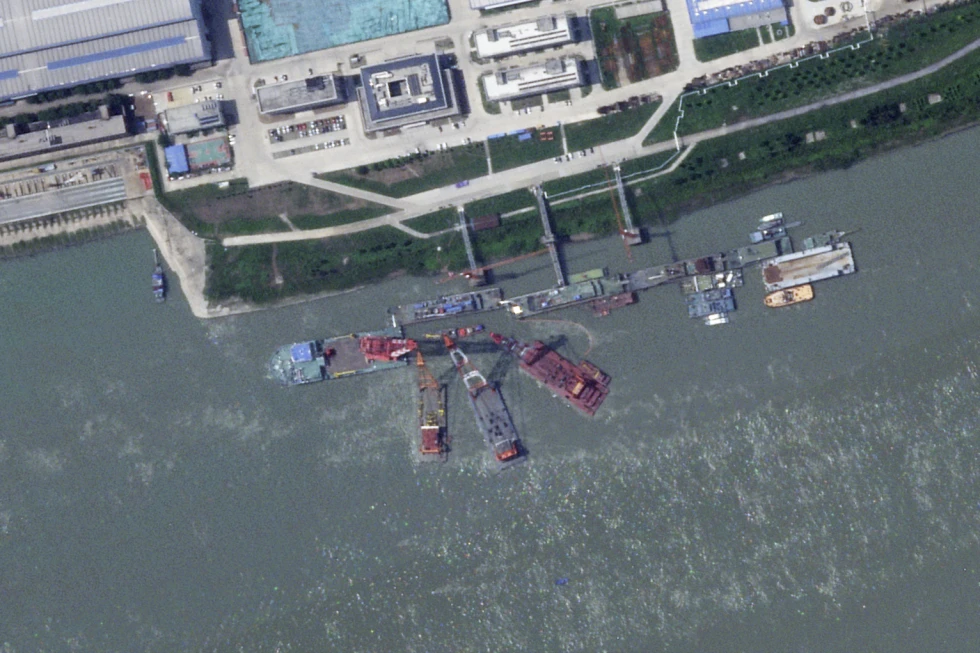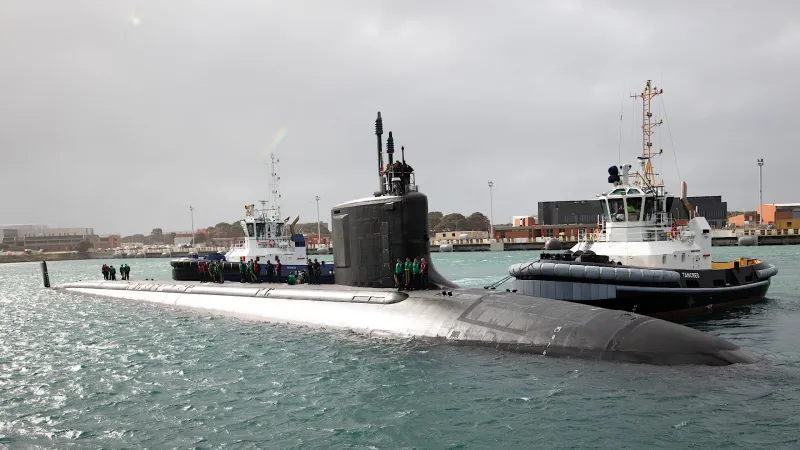A senior U.S. defense official disclosed Thursday that China’s newest nuclear-powered attack submarine sank alongside a pier during construction, as evidenced by satellite imagery. The incident, involving China’s first Zhou-class submarine, represents a significant setback for Beijing’s ambitious naval expansion program.
The official, speaking on condition of anonymity, stated that the submarine likely sank between May and June. Satellite images from that period showed cranes positioned in a manner suggesting efforts to lift the vessel from the riverbed.

This development comes amid rising tensions in the South China Sea, where China has become increasingly assertive in pursuing territorial claims. The region, crucial for international trade, is contested by several nations including Brunei, Malaysia, the Philippines, Taiwan, and Vietnam. The United States has responded by strengthening ties with regional allies and conducting freedom of navigation operations, actions that have drawn criticism from Beijing.
When asked about the incident at a press conference in Beijing on Friday, a Chinese Foreign Ministry spokesperson claimed no familiarity with the topic and provided no additional information.
The submarine’s sinking was first reported by The Wall Street Journal, following initial observations by Thomas Shugart, a former U.S. Navy submariner and analyst at the Center for a New American Security, in July. At that time, it was not publicly known that the vessel was the new Zhou-class submarine.

Satellite imagery from Planet Labs PBC, analyzed by The Associated Press, shows what appears to be a submarine docked at the Shuangliu shipyard on the Yangtze River before the incident. A June 15 image reveals the submarine either fully or partially submerged just below the river’s surface, surrounded by rescue equipment, cranes, and containment booms to prevent potential leaks.
The U.S. official noted that it was “not surprising” for China’s navy to conceal such an incident. The current status of the submarine remains unknown.
This setback occurs as China continues to rapidly expand its naval capabilities. As of last year, China operated six nuclear-powered ballistic missile submarines, six nuclear-powered attack submarines, and 48 diesel-powered attack submarines, according to U.S. military reports.
The news coincides with China’s rare launch of an intercontinental ballistic missile into international waters in the Pacific Ocean this week, reportedly the first such test since 1980.
An Associated Press story


